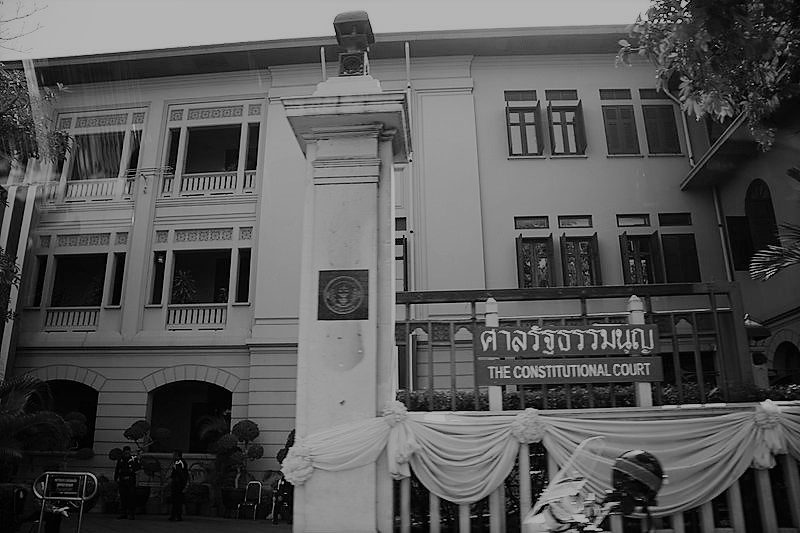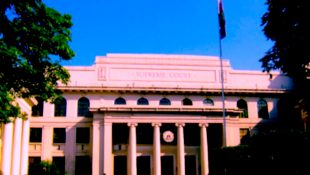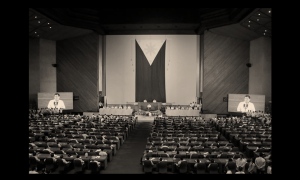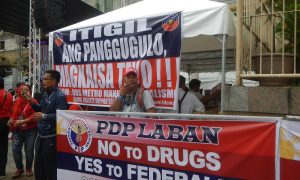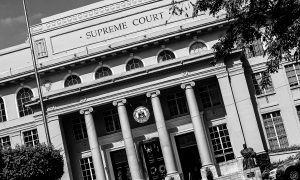Editor’s note: this article appears as part of a series on “Challenges to Charter Change: Critiques from Legal Experts”, co-edited by Nicole Curato and Bryan Dennis Gabito (Bo) Tiojanco. Read contributions from Bo, Dante Gatmaytan, and J.P. A. Villasor.
The current debate in the Philippines about charter change feels like déjà vu for me. 14 years ago, upon the request of a German foundation, I discussed with members of the Philippine House of Representatives my PhD research on constitutional reform in Thailand. In the talk, I reflected on lessons the then-recent Thailand experience with constitutional change could offer the Philippines, which was at that time engaged in its own constitutional debate.
The 1997 Thai “People’s Constitution” marked a distinct juncture in Thai constitutional history. Not only did it establish a liberal system of checks and balances and horizontal accountability, it was also enacted following a process which included public consultation and civil society (something, please note, which had been inspired by the 1986 experience of the Philippines). This ultimately ensured high public support for its passage. I concluded by pointing out that while certainly the choice of constitutional design matters, the constitution-making process itself matters as much as content.
This conclusion directly reflects what was emerging in the scholarly debate and the available empirical evidence: that both process and content are integral to the nexus between constitutional reform and liberal-democratic governance. The more inclusive, participatory, and transparent the constitution-making process, the more likely that the political order will be seen as legitimate, and that a political culture which views the constitution as a reference point for administrative and legislative actions would emerge. In deciding on content, constitutional reform demands that critical choices be made about such broad areas as the form of government, electoral procedures, the degree of centralisation, and legislative actions. Such choices often have direct consequences for economic and policy outcomes—as has been well-documented. In sum, constitutional reform ultimately embodies governance reform, which makes it vital that there be careful consideration to both process and content.
Although 14 years ago I may have been carried away by my enthusiasm for the 1997 Peoples Constitution in Thailand, the principles still stand. As we know, the 1997 constitution, which had lasted longer than most other Thai constitutions, was replaced in 2007 when a military coup produced a new draft, and last year that, too, was altered by the junta. As the Philippines renews constitutional debate in 2018, Thailand’s 20 years of experience under these three constitutions offers not only unexpected parallels but also cautionary tales—so much so that I cannot help but worry.
The drafting of the 2007 and 2017 Thai constitutions, unlike the 1997 process, lacked transparency, public participation, and open debate—similar to what is happening today in the Philippines. With the drafting shrouded in secrecy and heavily influenced by the military junta, the Thai drafters faced widespread scepticism and growing opposition from the public. And because the drafters hand-picked by the junta were perceived as not fully representative of society, the legitimacy of the process was eroded.
Rather than rectifying the situation, the public referendums on the drafts exacerbated the social and political divisions in Thai society. Although the 2007 constitution passed with a majority of 57% of national votes cast and the one in 2017 by 61%, voter turnout for both never reached 60%. In several provinces, the result was negative despite severe martial law restrictions on critics. Thus, having failed to provide an inclusive new social contract, Thailand is now sunk deep in a political quagmire. Given the lukewarm public support for a new constitution, the Philippine experience may end similarly.
Finally, the post-1997 Thai constitutional reforms did not improve liberal and democratic practice in any way. To the contrary, both constitutional revisions induced a gradual illiberal turn: elections were repeatedly delayed, non-elected, appointed members have greater say in the political process, and transitional provisions facilitated executive empowerment.
A reminder, then: authoritarians can use a constitution that seems liberal-democratic for their purposes, for instance when electoral-majoritarian institutions come to be controlled by elite-appointed members and officials or influenced by non-constitutional actors such as the military. Also, the capture of judicial institutions and other oversight agencies could severely limit enforcement of liberal rights and civil liberties. In fact, the two Thai replacement constitutions illustrate the danger that authoritarian regimes will use constitutional reform for their own ends—joining the growing cadres of illiberal regimes that have used constitutional reform to legitimise their hold on power no matter what a constitution decrees.
Observers may be quick to remind us that the Philippines has a very different constitutional history from Thailand—a country which has worked through 20 constitutions since 1932 and where a constitutional monarchy wields considerable informal influence over the polity. Others might argue that the Philippines has learned much from the sham 1973 drafting process under the Marcos dictatorship: the 1986 drafting process was deliberately inclusive and participatory to the extent possible, and efforts to alter the constitution in 1997, 1999 and 2009 had lost public momentum quickly after it was perceived to suit the interests of the incumbent president, for instance by circumventing term limits.
But how much has the Philippines really learned from its own experiences since 1973? Despite years of recurring internal debate on constitutional reform in the Philippines, the implications of certain institutional choices (e.g., federalism, a presidential vs. parliamentary system) remain ill-understood and have hardly been discussed. The impression can only be that the debate is actually being driven by narrow elite interests rather than concerns for the public interest. For example, the proposal to introduce new courts may look good on paper, but it could well accelerate the judicialisation of politics where courts are empowered at the expense of majoritarian-electoral institutions. Worse, it also carries the risk of politicising courts, particularly when combined with elite capture of the courts, as in Thailand.
Philippine Chief Justice Sereno’s undemocratic ouster
The Supreme Court’s ouster of Maria Lourdes Sereno was not just a case of discriminatory legalism or unconstrained democracy. It is not democratic at all.
There are other concerns: for instance, can the public referendum be free and fair considering the threats of martial law, assault on oversight institutions, and administration efforts to mobilise local governments and barangays to lobby for the constitutional change? Finally, and perhaps most worrying, the unspecified transitory period after the change gives the executive sweeping powers that seem to replicate the Thai experience (and also the Philippine experience under Marcos). The last Thai election took place in 2014; the government is still led by the military.
The experience of constitutional authoritarianism in the Philippines under Marcos by itself should make glaringly obvious the perils of a flawed and illegitimate process that can keep a country locked into illiberal practice for decades. The past 20 years in Thailand can only amplify to the Philippines a dire warning of how much is currently at stake.
 Facebook
Facebook  Twitter
Twitter  Soundcloud
Soundcloud  Youtube
Youtube  Rss
Rss 